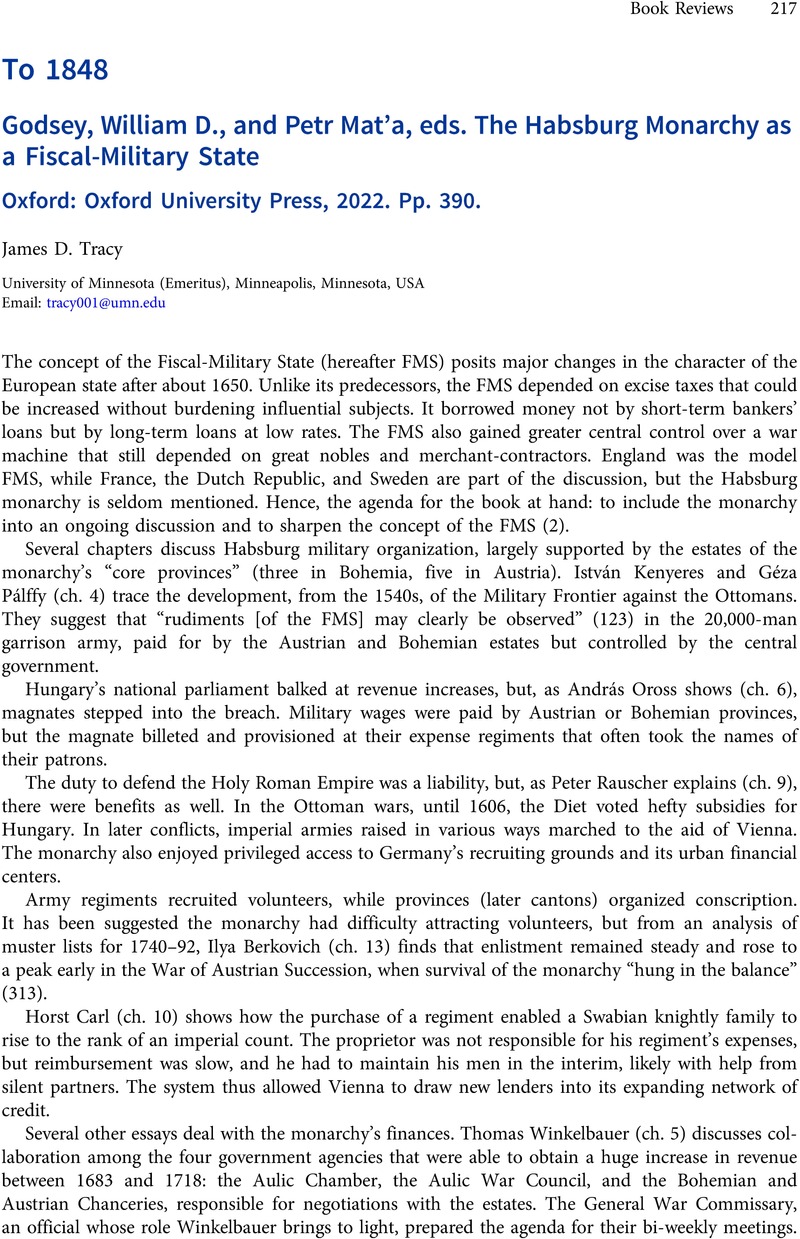No CrossRef data available.
Article contents
William D. Godsey, and Petr Mat'a, eds. The Habsburg Monarchy as a Fiscal-Military State Oxford: Oxford University Press, 2022. Pp. 390.
Review products
William D. Godsey, and Petr Mat'a, eds. The Habsburg Monarchy as a Fiscal-Military State Oxford: Oxford University Press, 2022. Pp. 390.
Published online by Cambridge University Press: 18 May 2023
Abstract
An abstract is not available for this content so a preview has been provided. Please use the Get access link above for information on how to access this content.

Information
- Type
- Book Review: To 1848
- Information
- Copyright
- Copyright © The Author(s), 2023. Published by Cambridge University Press on behalf of the Center for Austrian Studies, University of Minnesota


